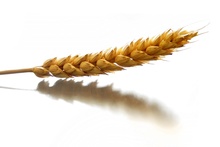Genotyping-by-sequencing
The Genomics Center offers two robust GBS methods that differ slightly in their workflow. One, the in-line method, is based on the Poland protocol which has the barcodes in the adaptors to allow for sample multiplexing after ligation. We offer 376-plex with the in-line method using the PstI + MspI double digest.
The alternative method - and our most routinely used - has common adaptors that contain priming sites for Illumina multiplexing indices, so samples are barcoded during PCR amplification, and then pooled. The main advantages to this method are that it allows for highly multiplexed reactions and also enables us to provide greater restriction enzyme options to our clients.
Species We Have Worked With
We have worked extensively with many of the popular GBS plant species using industry-standard restriction enzymes, and we can use your previous GBS protocol if you need to merge new data with a previous data set. In addition, we have optimized new GBS protocols for over 100 non-model species, giving researchers a new, low-cost genotyping option for their species. Please see our pilot project page for more information on optimizing a GBS protocol for your species.
Optional Add-on Services
The Genomics Center offers an end-to-end GBS service starting from DNA extraction through variant calling. Our highly experienced extraction team provides unparalleled high throughput extraction services and are able to customize protocols when needed. Please see our extraction page for pricing and contact information.
In addition, we offer a standard variant calling informatic service for diploid species using the STACKS pipeline. Deliverables include a GBS report as well as raw demultiplexed fastq files and filtered genotype calls in VCF format. If you are interested in further analyses beyond what is included in our standard analysis report, please discuss your project goals with your GBS project manager prior to starting your project. All additional analyses are billed at an hourly rate.
Start a Project
Whether your species is new to GBS or has an established protocol, we can help determine which sequencing instrument will best meet your budget and project goals. Clients are encouraged to contact our experienced GBS team for a consult on experimental set-up and sequencing options at gbs@umn.edu. Please tell us about your project by filling out our GBS project inquiry form to start your project today.
For updates on our GBS service and all our technologies, events, and services offered at the Genomics Center, subscribe to our quarterly newsletter.
UMN Rates
| Service | Savings Tier | Speed Tier | Priority Tier |
|---|---|---|---|
| GBS library creation. | $20.05 | $26.82 | $44.99 |
| Turnaround time. | 17 to 28 days | 9 to 17 days | 6 to 9 days |
| Bioinformatics. | Savings Tier | Speed Tier | Priority Tier |
|---|---|---|---|
| Variant calling per diploid species. | $347.10 | $560.10 | $773.10 |
| Turnaround time. | 10 to 15 days | 7 to 10 days | 5 to 7 days |
| Additional cost/sample. | $3.86 | $6.23 | $8.59 |
| Turnaround time. | 10 to 15 days | 7 to 10 days | 5 to 7 days |
| Requests beyond variant calling. | $119.56 | $192.93 | $266.29 |
| Turnaround time. | 10 to 15 days | 7 to 10 days | 5 to 7 days |
Notes
Tiers: Turnaround time (TAT) is in business days. The TAT is for the above-stated services and does not factor in the TAT for sequencing or other companion services. Availability for the Priority Tier is limited; contact gbs@umn.edu to see if this is a current option. More information about Pricing Tiers.
Bioinformatics: Deliverables include fastq files, filtered VCF file, and summary report for standard analysis.
External Rates
| Service | Savings Tier | Speed Tier | Priority Tier |
|---|---|---|---|
| GBS library creation. | $25.59 | $33.13 | $53.31 |
| Turnaround time. | 17 to 28 days | 9 to 17 days | 6 to 9 days |
| Bioinformatics. | Savings Tier | Speed Tier | Priority Tier |
|---|---|---|---|
| Variant calling per diploid species. | $442.80 | $679.65 | $916.53 |
| Turnaround time. | 10 to 15 days | 7 to 10 days | 5 to 7 days |
| Additional cost/sample. | $4.93 | $7.56 | $10.18 |
| Turnaround time. | 10 to 15 days | 7 to 10 days | 5 to 7 days |
| Requests beyond variant calling. | $152.53 | $234.11 | $315.69 |
| Turnaround time. | 10 to 15 days | 7 to 10 days | 5 to 7 days |
Notes
Tiers: Turnaround time (TAT) is in business days. The TAT is for the above-stated services and does not factor in the TAT for sequencing or other companion services. Availability for the Priority Tier is limited; contact gbs@umn.edu to see if this is a current option. More information about Pricing Tiers.
Bioinformatics: Deliverables include fastq files, filtered VCF file, and summary report for standard analysis.
Submission
Forms
UMN Sample Submission Form
External Sample Submission Form
Samples can be dropped off at one of our campus locations:
- 1-210 Cancer & Cardiovascular Research Building (Minneapolis campus)
- 20 Snyder Hall (St. Paul campus)
If shipping samples, the following address should be used:
Please send the tracking information to gbs@umn.edu.
UMN Genomics Center
ATTN: Corbin Dirkx
3510 Hopkins Place N.
Building 4 Suite W402
Oakdale, MN 55128
612-625-7736
Deliverables
Data Release
There are four options for transferring data from the UMGC to clients: 1) delivery to the Minnesota Supercomputing Institute’s (MSI) high-performance file system, 2) download from a secure website, 3) download with Globus, or 4) shipment on an external hard drive. Please indicate your data delivery preference when placing an order for sequencing.
1. MSI storage
Internal clients have their data released to MSI's Shared User Resource Facility Storage (SURFS). Delivered data will be located in the "data_delivery" folder in your group's folder on MSI's primary filesystem (home/GROUP/data_delivery/umgc). MSI does not charge for SURFS storage costs, but files expire and are removed one year after they've been delivered. Files should be copied to other MSI storage locations such as Tier2, Tier3, or your group's "shared" folder before they expire.
2. Web download
Internal clients that opt-out of MSI storage and external clients can download their data from a secure website using either a web browser or a command-line download tool, complete instructions are provided in an email from the UMGC. The client’s data is available for download for 30 days, after which the data will be removed from the data download website and the client takes responsibility for storing the data.
3. Globus
Internal and External clients can use Globus to download their data. This is the recommended method for external clients to download large datasets.
4. Hard drive
External clients may have data shipped on a hard drive purchased by the UMGC and invoiced to the client at a cost of $250 per hard drive.
Data Recovery
The UMGC archives most customer data for a year and some datasets are retained for 5 years or more. If you need a dataset re-delivered email a request to next-gen@umn.edu to initiate data recovery. The UMGC does not provide any guarantee that data can be successfully recovered from the archive.


